Nakayama is in between Narita And Haneda International Airport
<クッキーについての同意並び欧州居住者向けプライバシーポリシー>
中山・下総・散歩道
the vicinity of Hokekyoji 法華経寺界隈の散歩道
Ryukyosan Myoshoji Temple and Legends
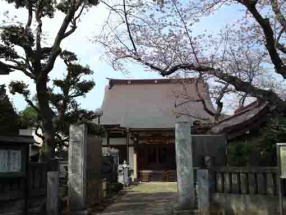
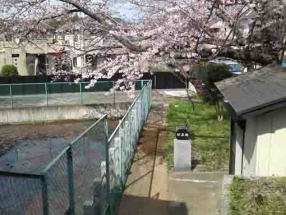
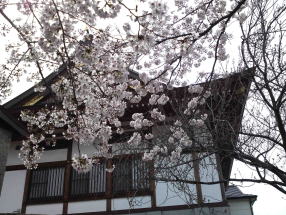
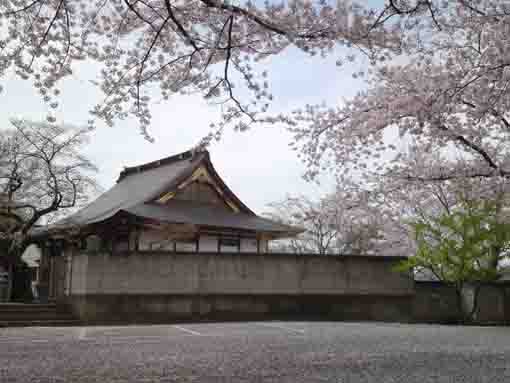
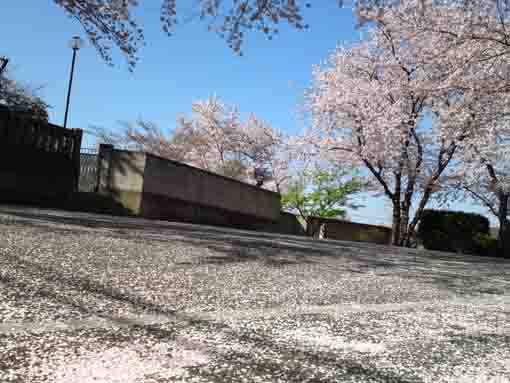
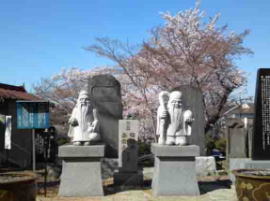
Ryukyosan Myoshoji Temple known as the sacred land of Cherry Trees was built in the same period as Nakayama Oku no In was built, so the history of the temple has almost 800 years. The legend of the Seven Sutra Mounds related to the reason to build Myoshoji Temple has remained even now. Moreover, the temple belongs to Shichifukujin in Ichikawa City and dedicates Fukurokuju and Jurojin in it.
Ryukyosan Myoshoji Temple is also called Sakura no Reijo (the sacred land of cherry trees), and it has many cherry trees in it and there are several good viewing spots for cherry blossoms.
Why don't you visit Ryukyosan Myoshoji Temple?
Ryukyosan Myoshoji Temple
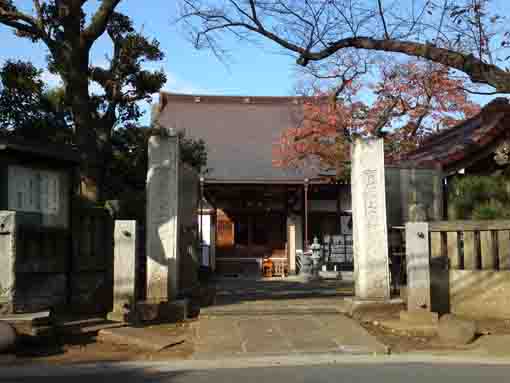
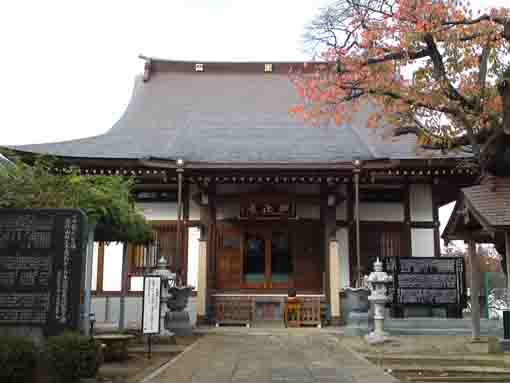
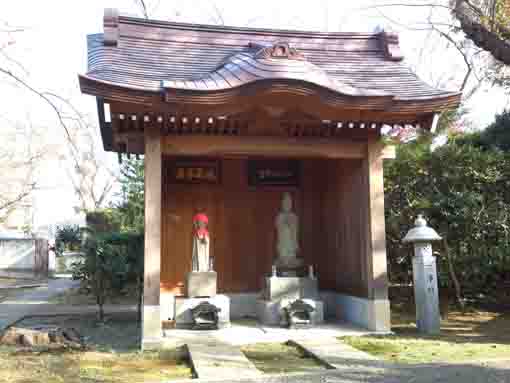
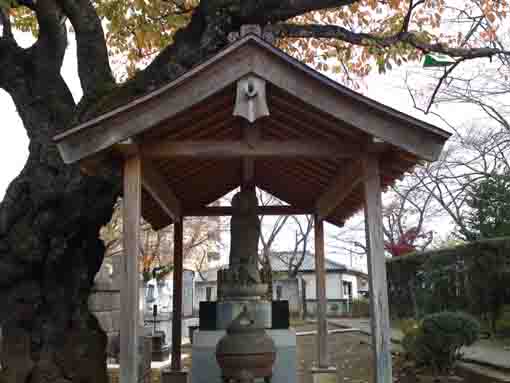
The Hitsory of Ryukyosan Myoshoji Temple
The temple named Myoshoji stands in 4-2122 Kitakata-cho, Ichikawa-shi, Chiba-ken or Senzoku.The Founder Nichiren and the Venerable Nichijo built Myoshoji Temple in 1260 in Kamakura period.
Myosho Daimyojin (a great sacred deity named Myosho) dedicated in the Myoshoji Temple in Senzoku, Nakayama, Katsushika-gun, Shimousa no Kuni was originally related to Hyakunichi Seppou (sermons talked for 100 days) by the Founder Nichiren at Nakayama Oku no In in the Era of the 89th Emperor Gofukakusa. At that time, Nichiren escaped from Kamakura and stayed in Wakamiya with some helps by Jonin Toki (the venerable Nichijo). When Nichiren preached for 100 days in a small hat in Wakamiya (Oku no In now) prepared by Jonin as his answers to many requests from the people around Wakamiya for him to talk to them a lot about Buddhism, the Lotus Sutra and himself. The 100 Days Sermon was successfully held in, so the number of people coming to listen to him increased day bay day.
There was an old lady in the people, and most people listen to him felt she was spooky since nobody knew her. After the end of his preach, the old lady asked to Nichiren to give her a Mandala drawn by him, the 8 sutras from the Lotus Sutra written by him and her Buddhist name. Nichiren said that he should help children in the end of the world and he named her Myosho and give her a mandala with some words that I gave her an oath that it could protect people from smallpox. And Nichiren handed her 8 sutras. The old lady left with her great pleasure.
Some people there followed her, she put 7 of the 8 sutras in 7 places on her way, and she disappeared near Senzokuike Pond 1200m north-east away from the hat. The people found the mandala hanged on a branch of a cherry tree over the pond, and a sutra (the fifth volume) put on the shore of it. Later, the way the lady passed by was called Mandala Komichi (Mandala Path) or Shichi Kyo Zuka (the Seven Sutra Mounds).
- 御神詠「昔より 約束なれば いもはしか 病むとも死なじ の内」
- Go Jin Ei 'mukashi yori yakusoku nare ba imo hashika yamu tomo shinaji kamigaki no uchi'
- 'Since ancient ages, people in the sacred places could not be died even they catchthe small pox or the measles.' written by the god.
Later, Harima no Kami (the governor of Harima Province) Tokitsugu Toki became a priest and named him Joshuin Nichijo, and he built a shrine called it Ryukyosan to dedicate Myosho Daimyojin by the pond. Since then, it has been said that someone who is in illness prays for the Daimyojin can be cured soon. The miraculous power of it is very immediate so it sounds like that Mother gives her baby milk. In Meireki Era, the heavy small pox was prevalent in Kurumakata, Inba-gun, Shimousa Province (in Funabashi city now), and almost a half of children and women were died. The villagers prayed for many gods and deities but there was no efficacy to cure the illness. They all did nothing without crying. A priest in the village heard from some gods in his dream in one night, they said that the bad disease would immediately disappeared and become safe if he prays for Myosho Daimyojin to cure the illness and he carves a charm from the sacred cherry tree to make a charm. After he woke up, he talked it to the villagers and they were pleased to hear it and ran to the small shrine to pray for and to make charms. Soon after they delivered the charms to the sick people, they cured like wiping off the diseases and the village could be in safe. After three years had passed, the heavy infectious diseases was prevalent in the region again, then they came to the Daimyojin to pray for again and they could keep in safe. Since then, people have called the small shrine 'Sakura no Reijo (the sacred land of cherry trees). This is the short summary of Ryukyosan Myoshoji Temple.
Please visit and pray for it that you would be peace in your present life and future life.
- The statue of Myosho Daimyojin dedicated in Ryukyosan Myoshoji Temple was enlightened by the Founder Nichiren.
- The statue of the Founder Nichiren having miraculous power to give luck was carved by Nichiro the first disciple of Nichiren in 1274.
- The regional name 'Senzoku' came from a thousand steps from the small hat in Wakamiya to Myoshoike Pond since a thousand steps calls 'Senzoku' in Japanese.
龍経山妙正寺境内「宗祖櫻之霊場縁起」より
The Seven Sutra Mounds in Myoshoji Temple
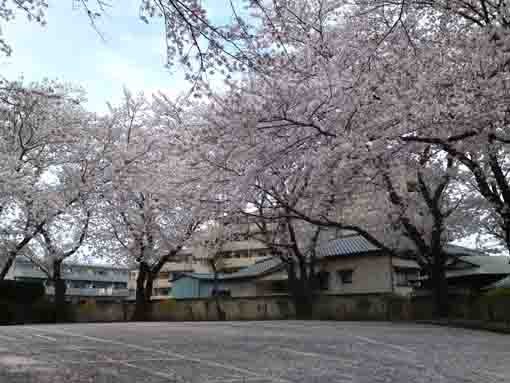

The Seven Sutra Mounds
After he had been attacked at Matsubagaya in 1260 and Komatsubara in 1264, the Founder Nichiren escaped to Wakamiya. At that time, he held the 100 Day Sermon there and many people came to listen to him every day.There was a beautiful lady listening to his talk earnestly in those people. But nobody knew her name. At the last day of the 100 Day Sermon, the lady thanked Nichiren for his precious sermon and asked him to give her a mandala written by him and her Buddhist name.
The Founder Nichiren watched her and found something mysterious feeling coming out from her, so he put up a verse on his desk and threw the water in it to her.
Suddenly, black clouds spread over the sky. While the people in Wakamiya were threatened it, the lady seized 8 volumes of the sutra in her hands and ran away.
She was an incarnation of a white snake. The people who had listen to his sermon ran after the white snake, it dropped some volumes while it was running to Senzokuike Pond. At last, it disappeared by the pond.
The white snake is the spirit of Senzokuike pond, neighbors called it 'Uba Gami (the god looks like an old lady)'.
When the people come to the pond, they found the sutra hanged on a branch of a cherry tree over it.
Later, Nichiren gave the white snake 'Myosho' as its Buddhist name.
And the cherry tree hanged the 8 th volume of sutra on has been known as a miraculous tree helps people catching the small pox. Since then, Myoshoji Temple has been believed by many people living around as a sacred place.
Moreover, seven places where seven volumes of the sutra had dropped on were called 'Shichi Kyo Zuka (the seven mounds) since there were seven mounds built in each place. Now, the seven stone tablets standing on the mounds were moved to the park of Ryukyosan Myoshoji Temple.
* The name Uba Gami might be related to the name of Ubayma Shell Mounds and the legends of the seven sutra mounds is one of the legends that women become nuns.
Good Spots near Ryukyosan Myoshoji Temple



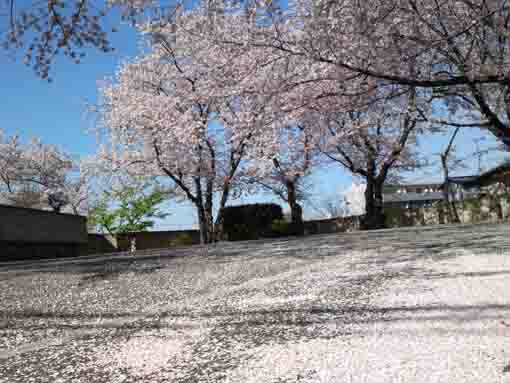
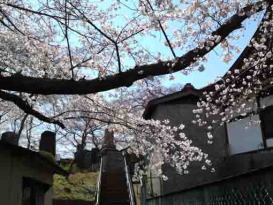
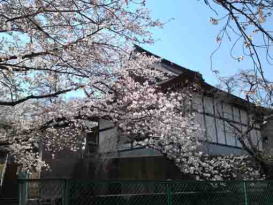
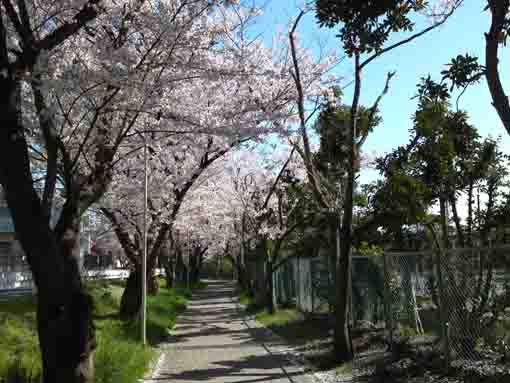
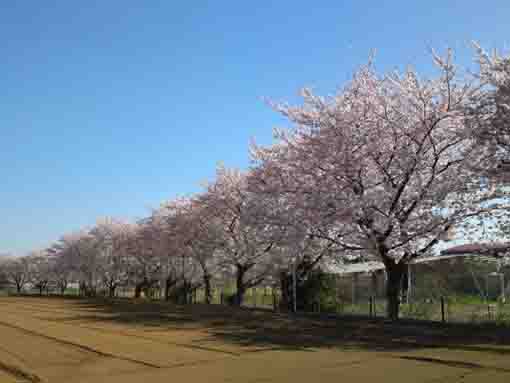
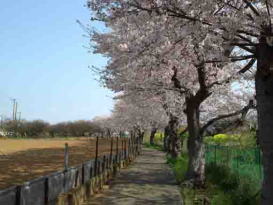
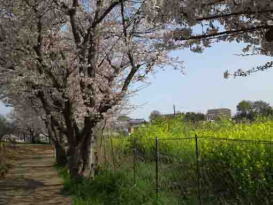
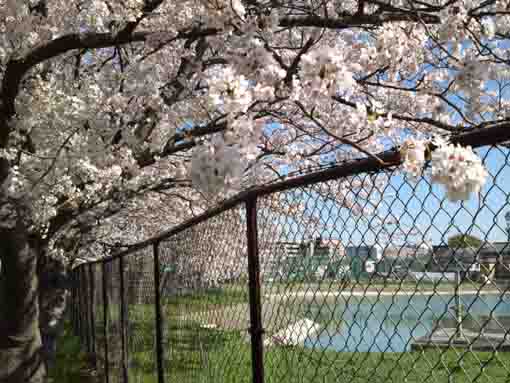
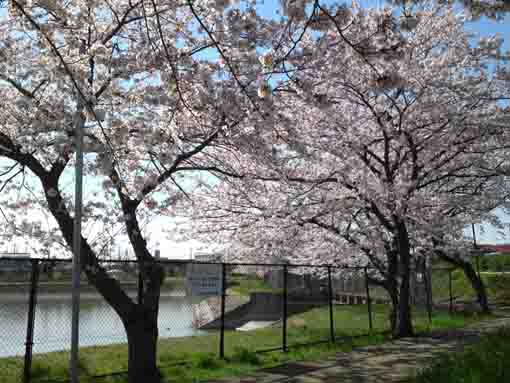
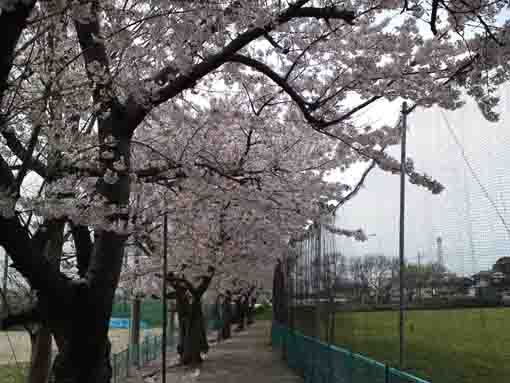
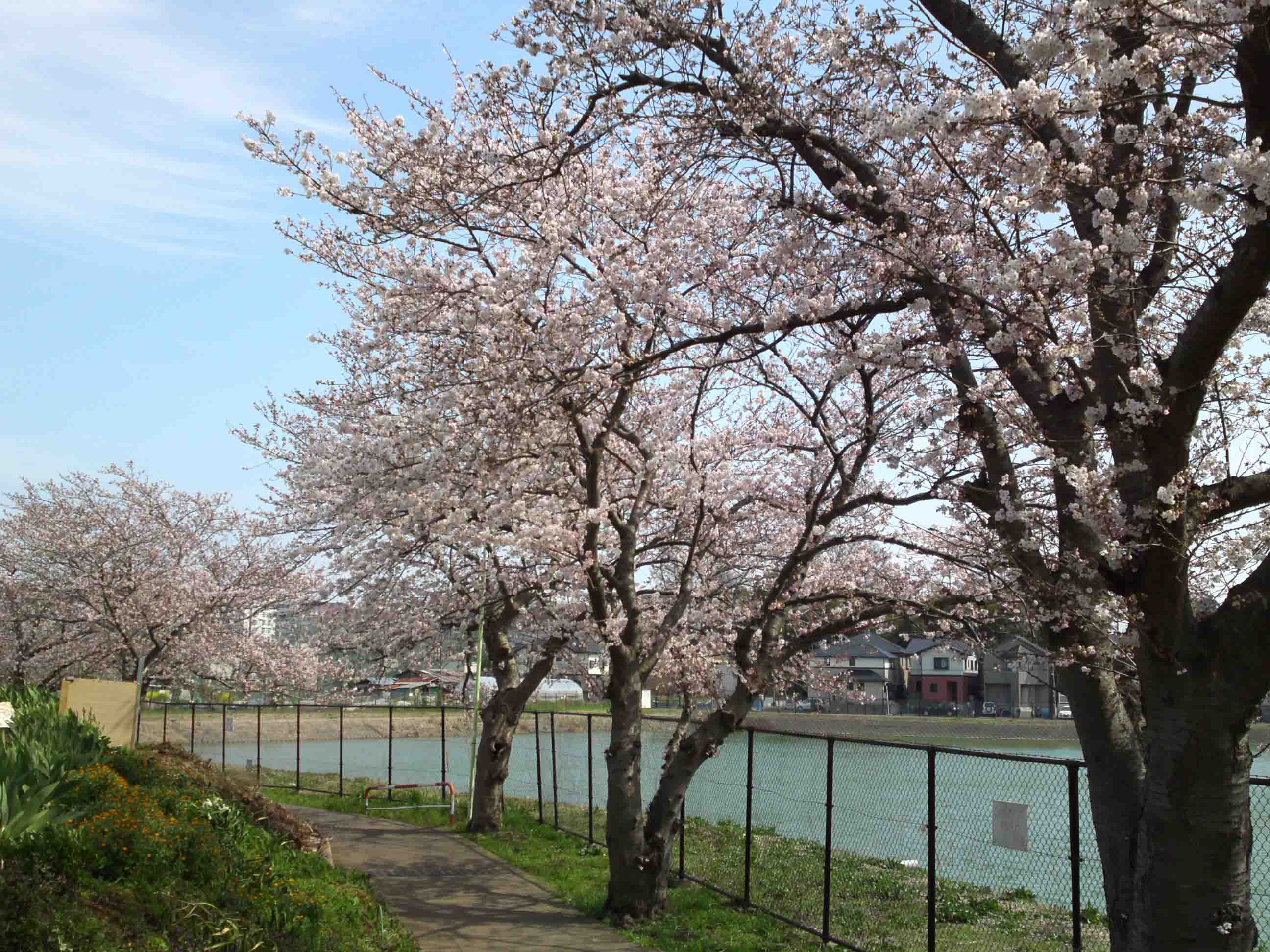
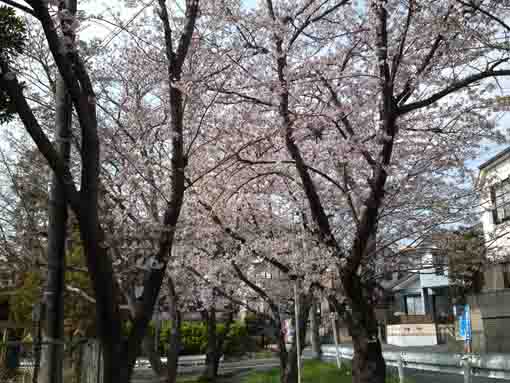
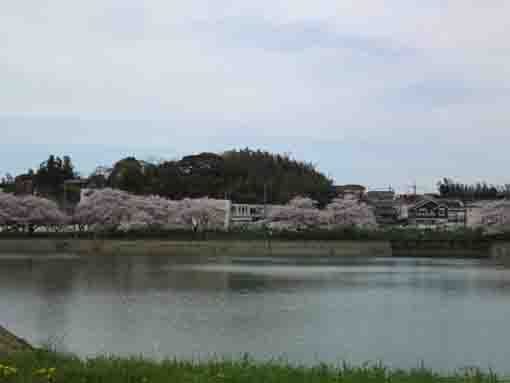
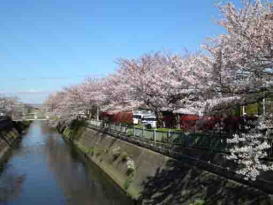
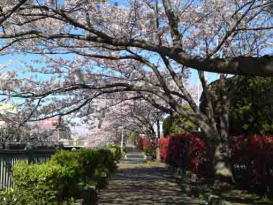
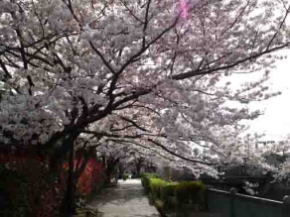
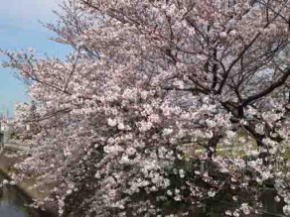
Ryukyosan Myoshoji Temple is known as Sakura no Reijo (the sacred land of cherry trees), so it has many cherry trees and it connects to other nice viewing spots of cherry blossoms.
Turning left at the gate of Myoshoji Temple, you can find a signal, then you turn left and go down the street a few seconds, there is a small path lined with many cherry trees. It is the beginning of the row of cherry trees. There is a large pond supposed as Senzokuike Pond on the south. The path goes along the north of the high school and finally it connects to Ogashiwagawa river, then it reaches to the most famous viewing Sakura spots in Ichikawa city Mamagawa River. You could find and enjoy brand new viewing spots for cherry blossoms.
Fuku Roku Ju and Ju Rojin in Shichifukujin
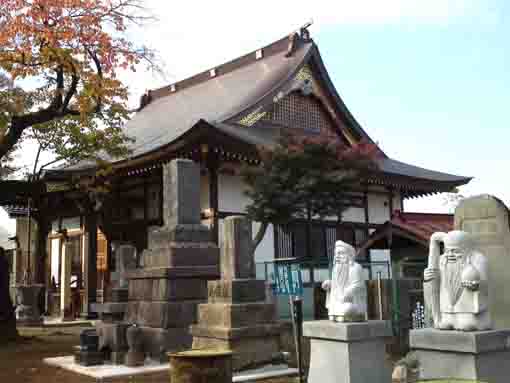
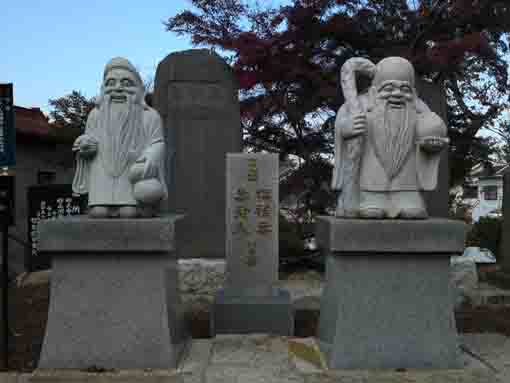
Fuku Roku Ju
Fuku means happiness favored with good human relations, Roku means happiness favored with wealth and Ju means happiness favored with healthy long life. Fuku Roku Ju is the god embodied the basic human happiness.Ju Rojin
Ju Rojin is the god who hopes long life, so the god hopes that everyone can live out his/her natural life span. Therefore, Ju Rojin protects people's safety and health.It is said that people could gain their healthy bodies and long live without serious disease if they believe Fuku Roku JU and Ju Rojin.
Ryukyosan Myoshoji Temple
龍経山妙正寺壽老人と福・禄・壽石像脇案内板より
Shichifukujin (the Seven Dieties of Good Fortune) In Ichikawa City
- 1st Bishamonten in Kokubunji Temple (3-20-1 Kokubun)
- 2nd Ebisuten in Shoganji Temple (4-12-3 Miyakubo)
- 3rd Daikokuten in Honshoji Temple (2-919-1 Onomachi)
- 4th Bishamonten in Jokoji Temple (3-1917 Onomachi)
- 5th Fukurokuju and Jurojin in Myoshoji Temple (4-2122 Kitakatamachi)
- 6th Bezaiten in Okunoin of Hokekyoji Temple (2-21-1 Wakamiya)
- 7th Hoteison in Anyoji Temple (2-16-35 Koya)
- 8th All Seven Gods in One in Myooji Temple (2-18 Hongyotoku)
参考
龍経山妙正寺境内「宗祖櫻之霊場縁起」
龍経山妙正寺壽老人と福・禄・壽石像脇案内板
改訂新版市川のむかし話
市川市ホームページ
江戸名所図会6 ちくま学芸文庫
Why don't you visit Shichifukujin in Ichikawa on this movie?
The Location and Access to Ryukyosan Myoshoji Temple
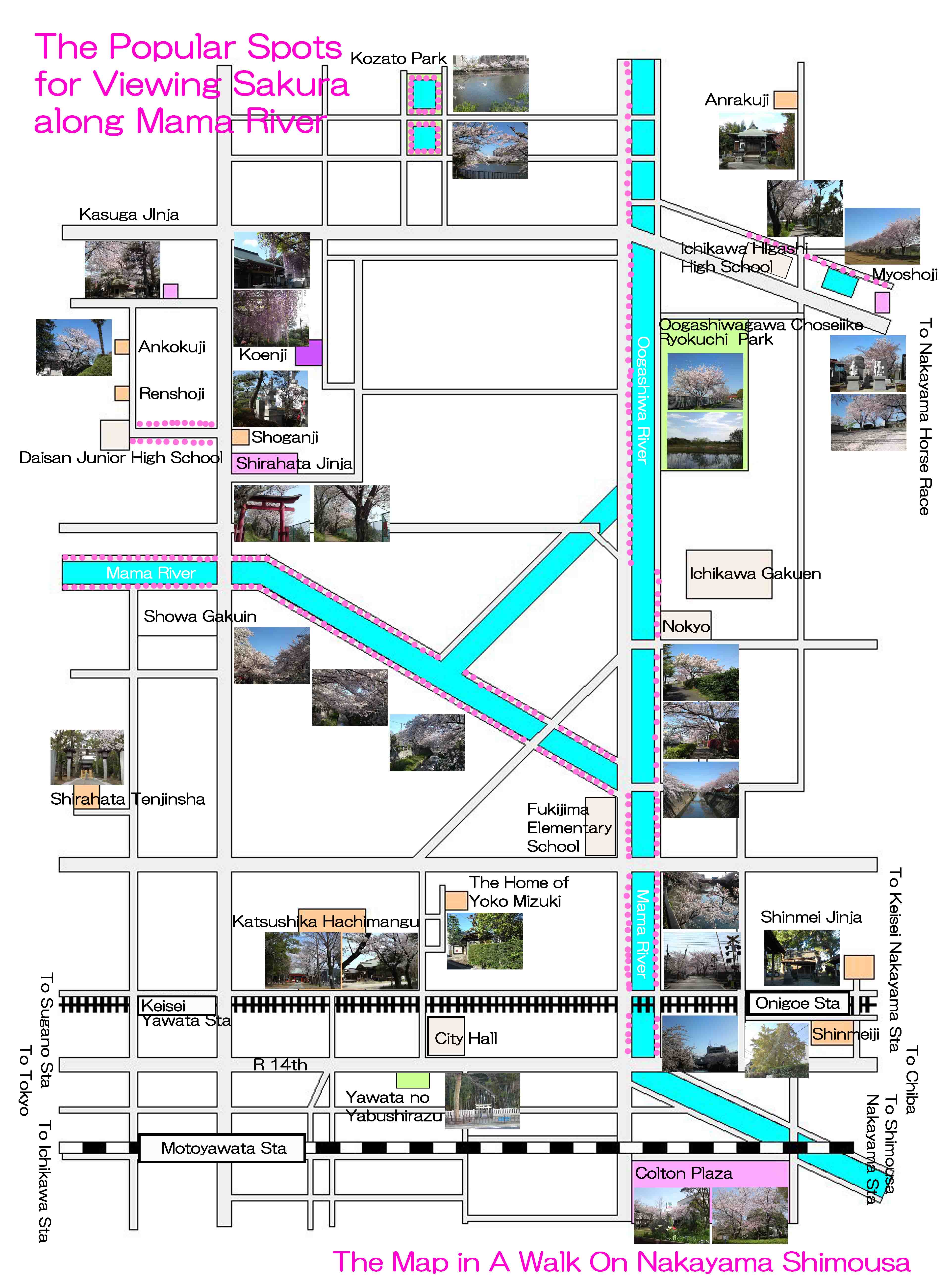
The map of the noted spots near Myoshoji
PDF of the map of the noted spots along Mama River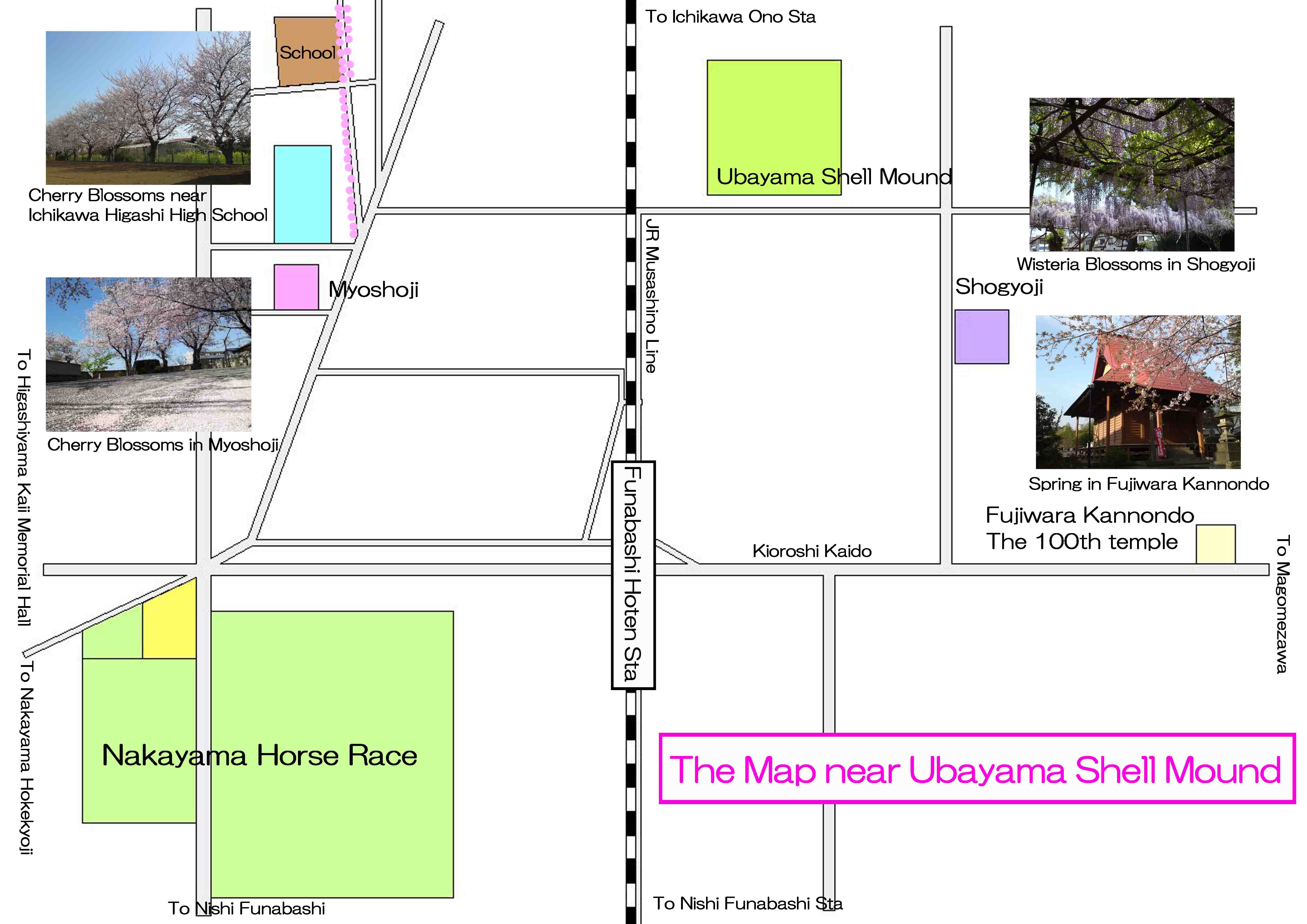
The map of the noted spots near Ubayama Shell Mound
PDF of the map of the landmarks near Ubayama Shell MoundRyukyosan Myoshoji Temple
4-2122 Kitakata-cho, Ichikawa-shi, Chiba-ken- Ryukyosan Myoshoji Temple has a great accessibility from both Narita and Haneda International Airport.
- From Narita International Airport, take JR Sobu-express line, transfer the line at Nishi-funabashi to Musashino Line bound to Fuchuhoncho or Higashi Tokorozawa, get off Funabashi Hoten Sta. And also take Hokuso Line, transfer the line at Higashimatsudo to Musashino Lline, get off Funabashi Hoten Sta. It takes minimally 50 minutes from Narita Airport.
- From Haneda International Airport, take Keikyu-line bound to Narita, transfer the line at Takasago Sta to Hokuso Line, and transfer the line at Higashi Matsudo Sta to Musashino Line, get off Funabashi Hoten Sta. It takes almost 1 hour from Haneda Airport.
- From Tokyo Sta, take Musashino Line bound to Fuchuhoncho or Higashi Tokorozawa, get off Hunabashi Hoten Sta. It takes about 25 minutes from Tokyo Sta.
- From Akihabara Sta, take Sobu line bound to Chiba, Tsudanuma or Nishi Funabashi, Ttransfer the line at Nishi Funabashi to Musashino Line bound to Fuchu Honcho or Higashi Tokorozawa, get off Funabashi Hoten Sta.
- Take 11 minute walk from Funabashi Hoten Sta.
The Landmarks Neighbor Of Myoshoji Temple
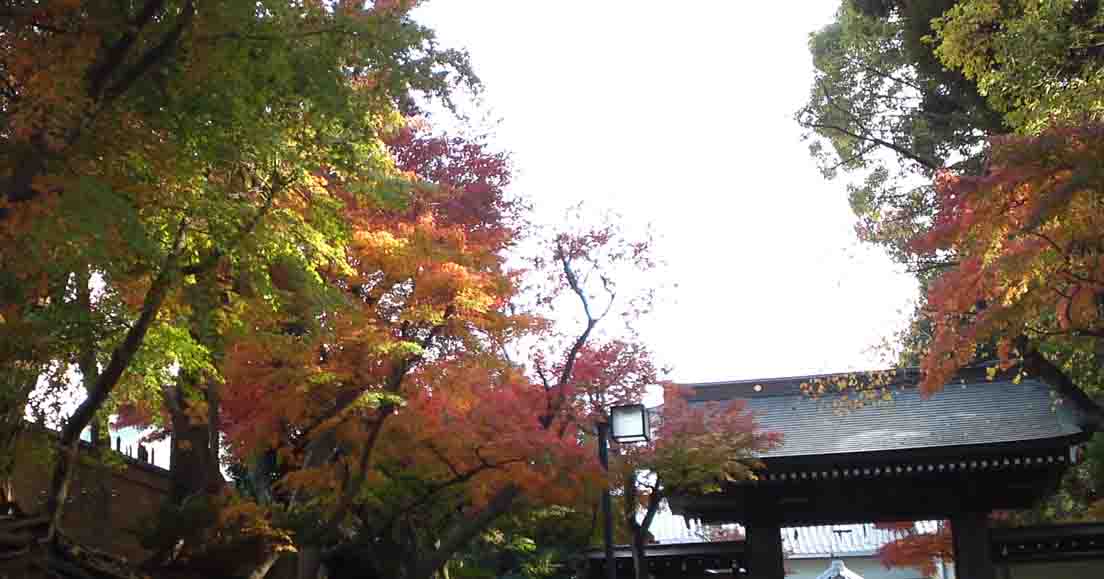
Tacchue Temples and the Branch Temples in Nakayama Hokekyoji
Some of the tacchu temples are introduced in this page.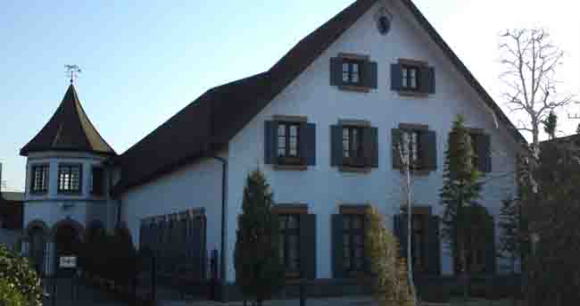
Higashiyama Kaii Memorial Hall
This small gallary has wonderful works of the great painter Kaii Higashiyama lived in Nakayama.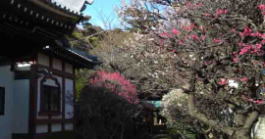
Nakayama Oku-no-in
Nichiren had preached first time at the Oku-no-in. Later, Jonin Toki built a temple named 'Hokke-ji'. There are several ume trees blooming beautiful ume blossoms in spring silently.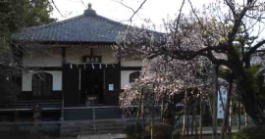
Onju-in Temple
Onjuin Temple is famous for the temple to deliver the Nichiren Sect's traditional style of ascetic practices. Tokugawa, Maeda and many people faithfully has believed for ages.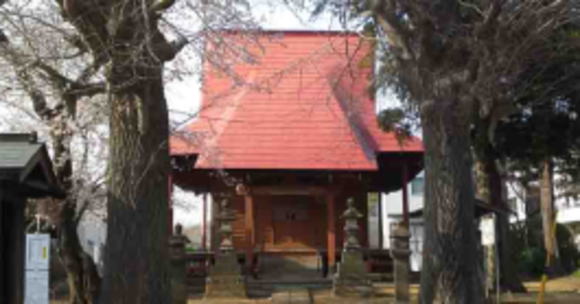
Fujiwara Kannondo Hall
Fujiwara Kannondo Hall has the legend of the great swordsman Mushashi Miyamoto, sometimes it was his hideaway.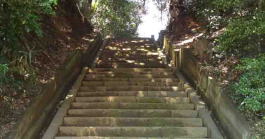
Shogyoji Temple
It preserves the seated statue of Nichiren and Yosobei Kajikawa's mementoes. It also has the side story of The Forty-Seven Ronins.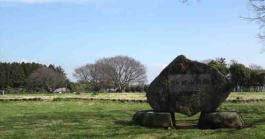
Ubayama Shell Mound
This shell mound designated as the National Historic Site and was formed from middle to late Jomon period.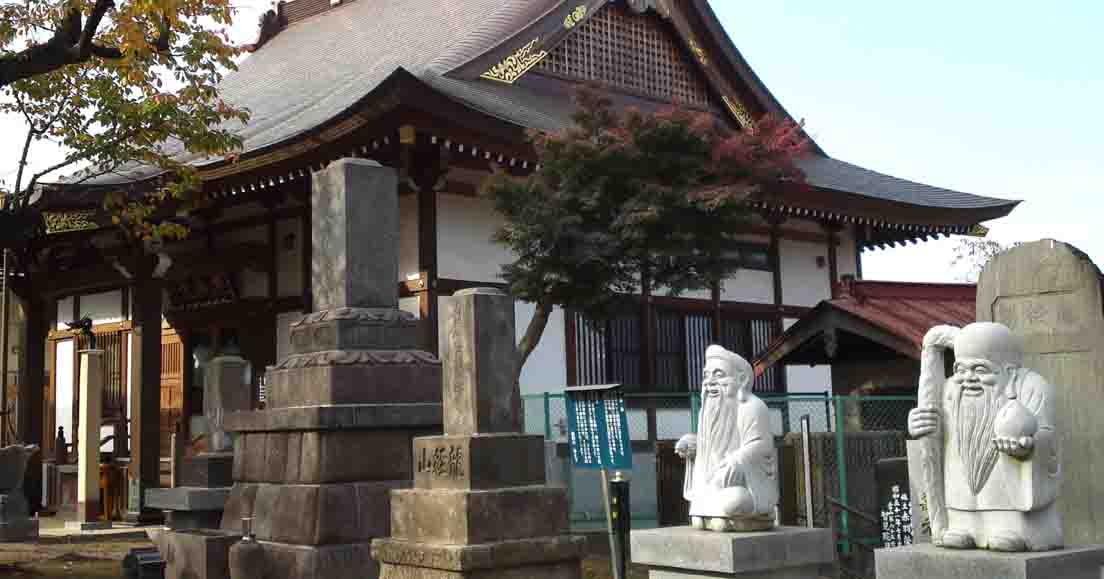
Ryukyosan Myoshoji Temple
The sacred temple covered with holy cherry trees is famous for the legend of Seven Sutra Mound and Shichifukujin in Ichikawa.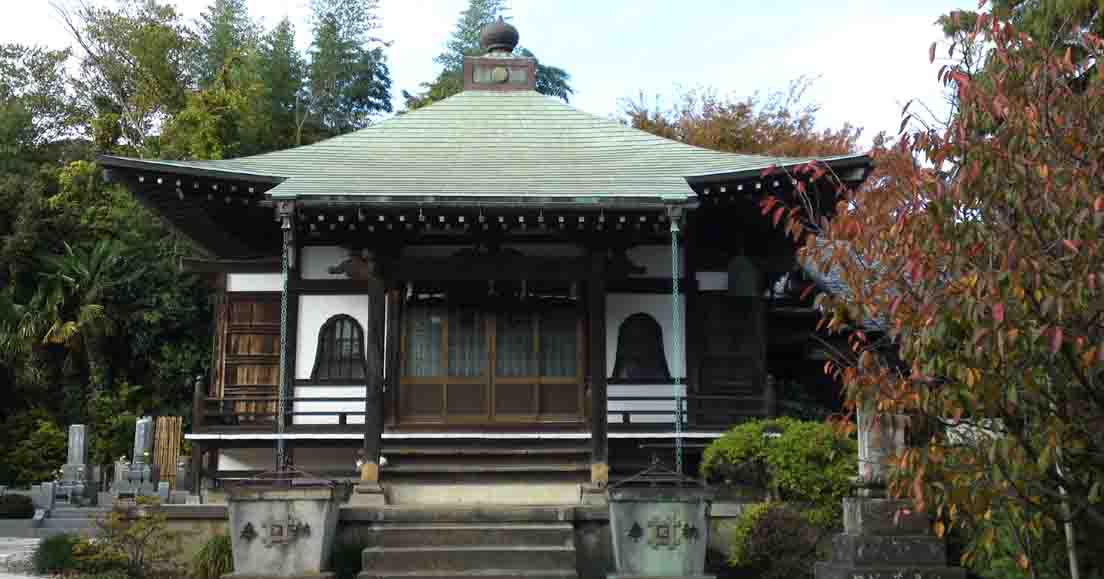
Homensan Anrakuji Temple
The first nunnery of Nichiren Sect built by the Princess Tokiwai, the legend said ther daughter of the Emperor drifted to Ichikawa.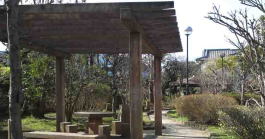
Seikaen Garden
A peaceful place to rest on the way to Nakayama Hokekyoji Temple is Seikaen. It has the branch office of the city hall.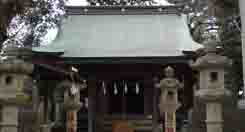
Awa Jinja Shrine
It has the legend of the young samurai Hirotsugu Satomi.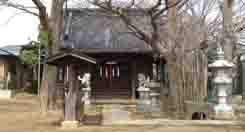
Takaishigami Jinja Shrine
The shrine related to the battles of Konodai in Sengoku Period.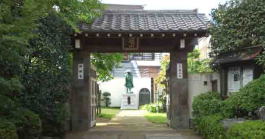
Shinmeisha Shrine and Shinmeiji Temple
They have their long history and the legend of Oguri Hangan.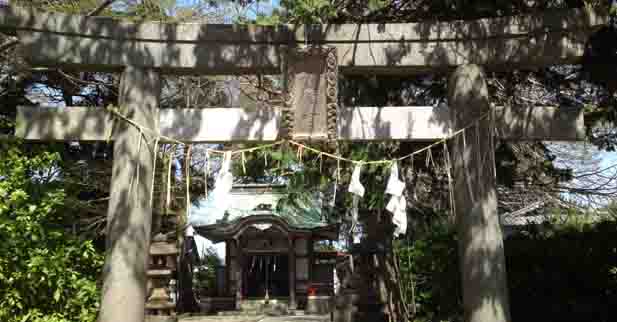
Wakamiya Hachimangu Shrine
A small shrine relates to the Founder Nichiren, Nichijo and the Prince Yamato Takeru.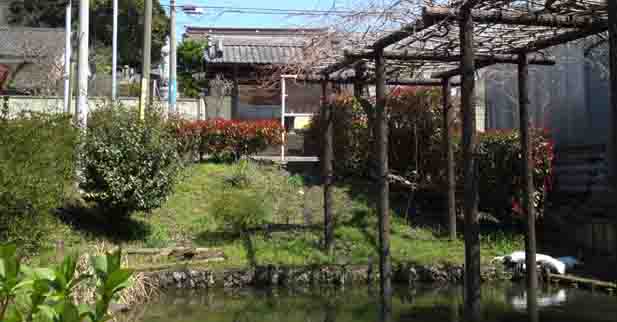
Tamonin Temple and the Futago Fuji Pond
They are related to the Founder Nichiren.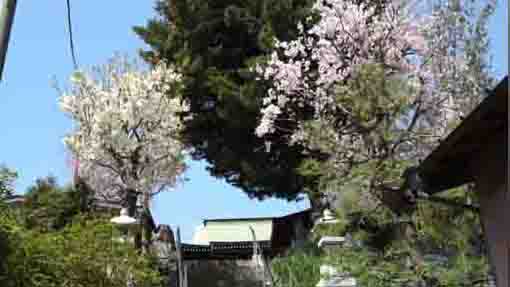
Myoken Jinja Shrine in Terauchi
This shrine is the guardian deity of this town and Kafu Nagai, a famous writer, had visited.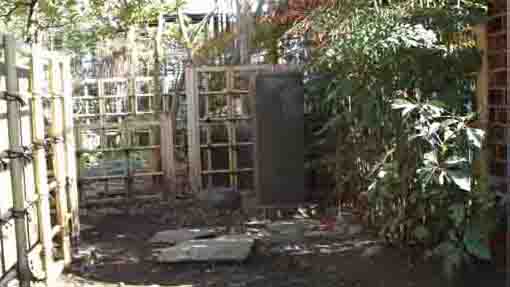
Kazura no I well in Katsushika
A well became famous as Kafu Nagai introduced in his essay.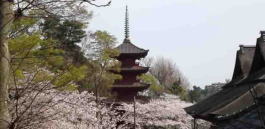
Nakayama Hokekyoji Temple
Visitors could enjoy seeing cherry blossoms and cultural properties.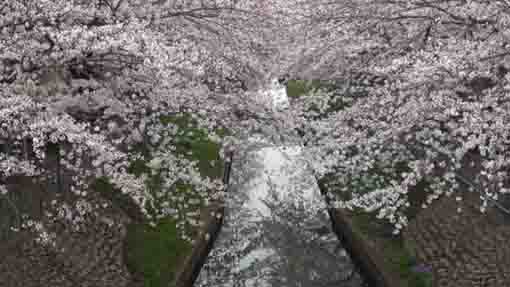
Cherry trees along Mamagawa River
The Mama-gawa River is the very famous spot to enjoy seeing the blooming Cherry Blossoms.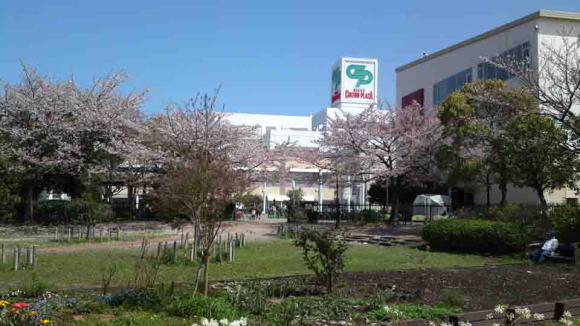
The Area Around Nikke Colton Plaza
Nikke Colton Plaza and some landmarks around are attractive and exciting to walk on.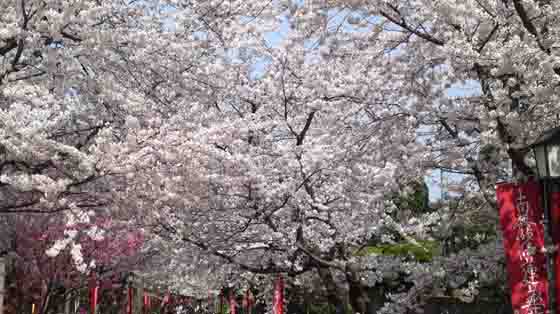
The Popular Viewing Sakura Spot / Nakayama Hokekyoji Temple
It is very popular viewing sakura spot and thousands of people visit and enjoy seeing sakura.- 広告 Advertisement -
